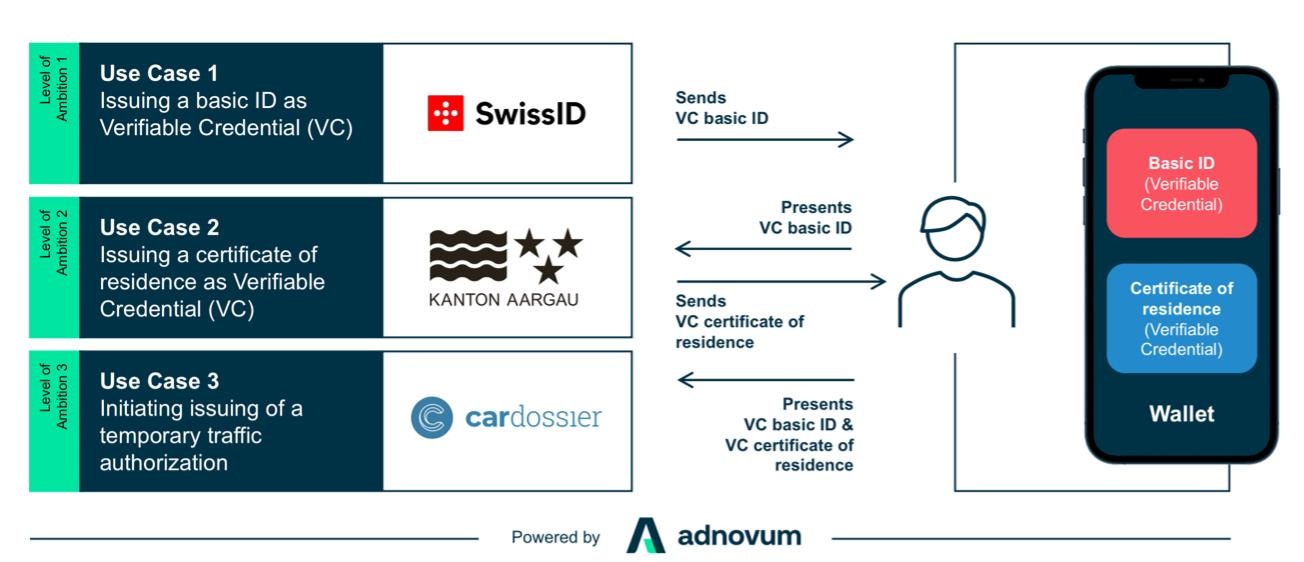The Power of e-ID ecosystems
Exploiting the potential of the e-ID ecosystem
In chemistry, a reaction can be accelerated by adding a substance called a catalyst. The catalyst reduces the activation energy required for the reaction, which can then be sped up.
The addition of a catalyst to a chemical reaction can be considered the analogy to the introduction of the trust infrastructure and the government-issued verifiable ID card – the e-ID – into the ecosystem of Swiss society and economy. In our view, it can also be seen as a «response booster» to enhance the performance of economic growth in an increasingly digital world.
In June 2022, the Federal Council opened the consultation on the new e-ID (media release). Its main difference from the previous one is the following three aspects:
- The federal government is responsible for issuing the e-ID and operates the e-ID infrastructure.
- Data protection plays a central role.
- The e-ID serves as the cornerstone of an ecosystem of digital credentials that supports the issuance and use of government and private digital credentials of all kinds (see also the das digitalswitzerland white paper, in which DIDAS was heavily involved).
This ecosystem has great potential in terms of digitization in Switzerland and will strongly influence the way we handle personal data and consume digital services and products in the future.
Making the e-ID ecosystem tangible with a real application
To make this ecosystem tangible, three members of DIDAS (SwissSign, cardossier and Adnovum) have built a mini-ecosystem as a PoC in collaboration with the canton of Aargau. This exemplary ecosystem consists of three use cases that build on each other and shed light on the issuance and use of digital credentials in the form of SSI-Verifiable Credentials (VC).

Use case 1 – Issuing a basic identity or basic ID: In the first use case, users log in to the SwissID portal with their productive SwissID login. On the portal, users are visually guided – from the installation of a suitable wallet to the issuance and storage of the basic ID as a verifiable credential on the smartphone.
Use case 2 – Issuing a certificate of residence in the eGov portal: With the basic ID created in the first step, the user logs in to the eGov portal of the Canton of Aargau. The login is done by SSI and requires e-mail, last name and first name from the basic ID. The other data of the basic ID is not disclosed. The eGov portal can trust the data of the basic ID and verify it. The data is used to load a residential address for the person from the system. The user can then store the residential address as a verifiable credential in his or her mobile wallet. Upon completion of use case 2, the user has a basic ID and the residential address is stored in his or her wallet.
Use case 3 – Initiating a provisional traffic authorization for a vehicle: The registration of a car involves many players such as the policyholder, the insurance company, the garage and, of course, the road traffic authority (StVA). In addition, there are many formalities associated with it. The goal of this use case is to facilitate the registration of a vehicle by providing the cardossier platform with the identity and certificate of residence of the policyholder as verifiable credentials. cardossier then automatically carries out the further registration steps together with the relevant insurance company and the road traffic authority. In the process, the insurance company and the road traffic authority always receive the same and correct address information.
By implementing the mini-ecosystem and intensively testing the three use cases, stakeholders gained valuable insights into user interaction, governance, and technology. However, the initiative has primarily demonstrated how an ecosystem of digital credentials can function and bring sustainable added value to data protection and digitization.
Expanding the scope of exploration
Similar to these three use cases, there are endless opportunities to build value-added digital services and products based on the e-ID ecosystem. However, they require an understanding of participation in an ecosystem with possibly distributed benefits versus existing centralized models, i.e. ecosystems characterized by the control of a value stream or the unique positioning of one or more intermediaries.
This blog article was written by Stéphane Mingot and Daniel Säuberli. We look forward to your comments and to continuing the dialogue around the topic.


